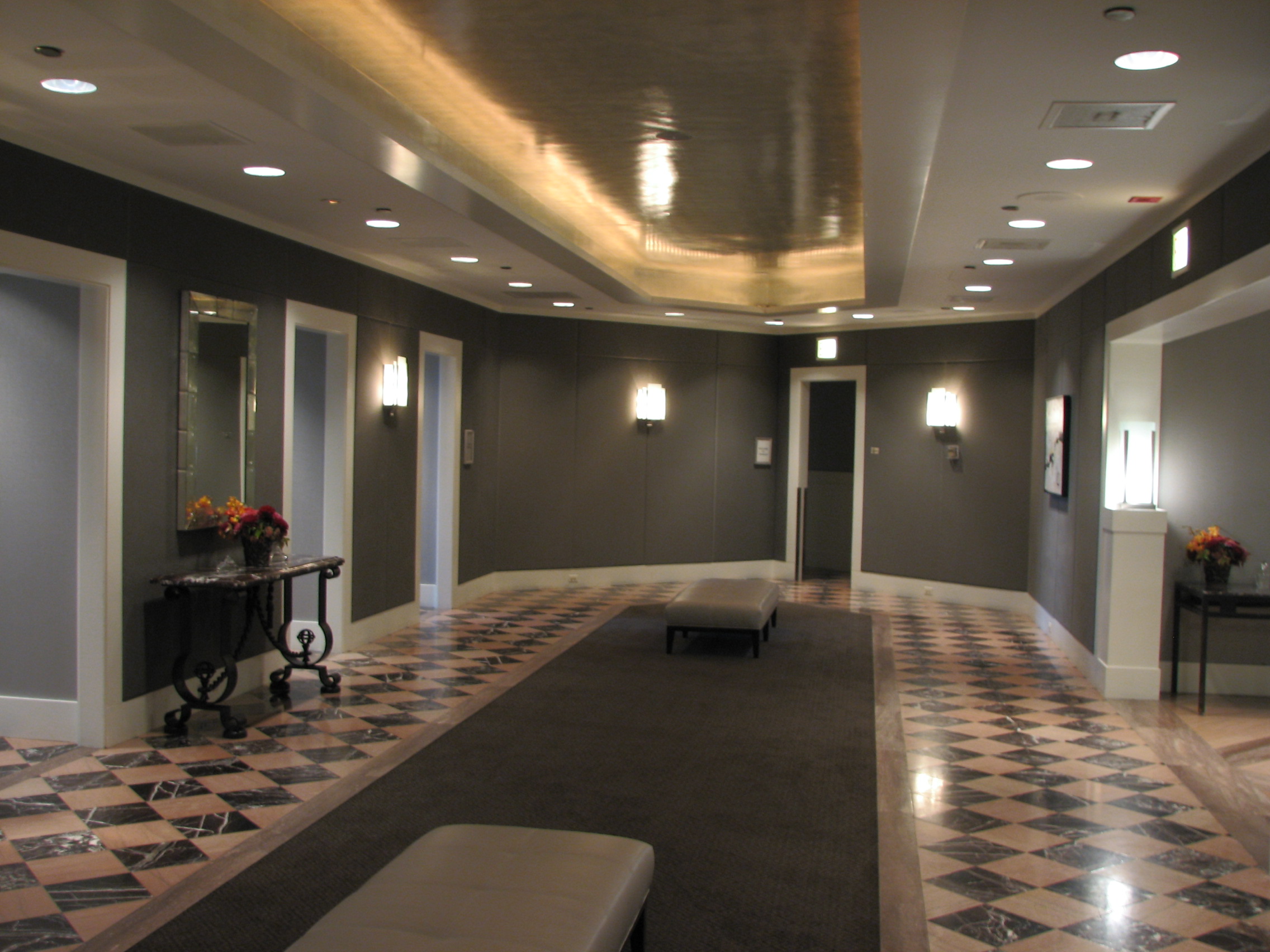
If walls could talk, the walls in heavily trafficked spaces might complain of scuffs, dents and scratches that customers and tenants leave. Others would complain they’re bored. Really bored, because all they are sporting is a coat of white paint. A solution many contractors and designers turn to for walls that are abused or just plain dull is wallcovering.
Though perceived as more expensive than paint (coverings typically run $5 to $35 a yard), the cost differential can be negligible, and wallcoverings boast added versatility, longevity and architectural flare. The key is selecting the right covering for the space.
John Jacob, senior project manager at Hester Commercial Painting, works with clients to make these decisions every day. With thousands of wallcovering options to choose from, Jacob walks contractors, owners, building managers and designers through the following questions when selecting a wallcovering,
- Are you in a time crunch? Patterns take more time to install than solid coverings because of the precision needed to line up each piece. If you are on a tight deadline, use a solid color or a forgiving pattern, such as a product from a “Building Standard” quick shipping collection.
- How old are the walls? Walls in vintage buildings may take extra time and care to cover if they are warped and uneven. Avoid vertical or horizontal patterns, which highlight walls that aren’t perfectly square. Random or flocked, patterned coverings can help conceal dips and distortions.
Wallcovering
- Is the owner or tenant interested in being eco-friendly? There are plenty of natural wallcoverings to consider that don’t exude VOCs (volatile organic compounds) and are made with natural materials, such as bamboo, woven cloth, cork and stone. There are also wallcoverings made out of recycled materials.
- How much traffic is there? Vinyls, sisals and flocked coverings work well in high-traffic areas such as hallways, lobbies and entryways. They are highly durable and withstand dents and scratches.
- Is the space a medical facility? Doctors’ offices, clinics and waiting rooms need to meet specific sanitation requirements. Using new technologies, these coverings house live microbes that kill harmful bacteria.
- How much noise will be generated? For high-traffic, high-volume areas such as auditoriums, restaurants and shared office spaces, acoustical wallcoverings may be ideal. These coverings are made of soft, sound-absorbing fabrics and are given a rating based on how well they absorb sound into the wall, known as Noise Reduction Coefficient or NRC.
Hester Commercial Painting provides Chicago-area commercial establishments, including office, retail and medical settings, with reliable painting and wallcovering services as well as a full roster of faux and specialty finishing services through its affiliation with Hester Painting & Decorating.
